Winter is coming and the glorified tents that we call houses in Australia are getting cold, which means people with ducted gas heating are basically setting fire to money to keep warm. But ducted gas systems don’t only suck up your cash: they suck at heating efficiently too. Here’s how to replace them.
You Might Convert Ducted Systems
The ducts are already there, so can’t you just change what is pumping heat into them? Unfortunately, it isn’t so simple. Properly designed heating uses ducts sized for the job, but in the past the focus was usually on minimising noise.
- Evaporative cooling calls for changing the air in your house every two minutes1 because the temperature delivered is at best 10°C lower, so the ducts are larger.
- A ducted reverse-cycle air conditioner (RCAC) can deliver twice as much temperature change, so at 20°C, ducts can be roughly 30% smaller in diameter to deliver half the air volume and the same comfort.
- Burning gas delivers air at 30°C above ambient, so even less hot air needs even smaller ducts. They tend to be cheap and poorly insulated because the gas industry doesn’t care if they’re wasteful. They’ve got heat to burn, as well as your money.
Converting ducted gas systems usually means full replacement, but if the original installer used ducts that are too large, because that’s what they had in the truck, you might be in luck.
The other option is a “Dominator” from Australian air conditioning manufacturer Seely, which is designed to convert existing gas ducts to RCAC.
You’re Better To Abandon Ducts
However, my brutally honest advice is simple: don’t do ducts at all. They’re leaky, dirty, failure-prone, horribly inefficient and as an electrician, I hate climbing over and damaging them in the roof space.
Many people don’t believe that ducted air conditioning is just an extension of Australia’s badly built housing, but the fundamental problems are many:
- Ducted systems are working in a cold tin shed. The ducts and air handling machinery are operating outside the insulated envelope of your house.2
- Ducts are huge. They have to be to shift large volumes of air. No matter how well you insulate them, a massive surface area will always leak more energy into the roof or floor space.
- Ducts leak. Whether it’s from clips holding the registers in the ceiling, taped duct joins, or the air handler; ducted systems leak air you’ve paid to heat.
- Ducts make your house leaky. Punching holes in the ceiling not only makes holes in the insulation, it creates air leaks where your warm air bleeds out, or cold drafts can bring dust in.
- Ducts are unreliable. Sometimes joints fail because plumbers, electricians, cable TV fitters or similar rodents damage them. As for zone motors – when these electric powered valves fail, you can no longer control where the air goes.
- Ducts are dirty. Not only are they difficult to clean, in the event of a fire, ducts will carry smoke throughout the house.
Insulation Above All Else
When the owner of the roof in the photo below got an insurance payout to replace his roof, we removed the old solar and I browbeat him into paying the roofers to install insulated foil-faced insulated sarking. It was now or never.
The upshot was maintaining comfortable indoor warmth with the thermostat set at 3 degrees lower temperature than before.
No longer were they paying to heat the space above the ceiling. Without heat leaking from ducts, this roof didn’t boil off the condensation; and trying to climb it to reinstate the solar nearly killed me.
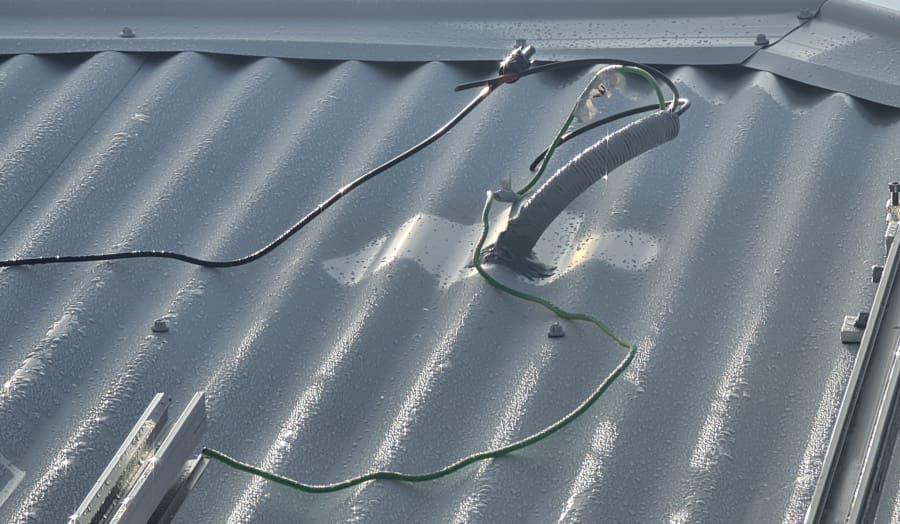
The dry circle around this electrical conduit shows warm air leaking through the roof blanket. It’s a vivid demonstration of how well insulation under the iron works.
Australians Build Crap Houses
We’ve written about it before. But in a properly designed Passivehaus, which will cope with alpine Germany or cold Canberra, they do use ducted systems to introduce fresh air and recover heat in the process. They key difference is the whole system is inside the house.
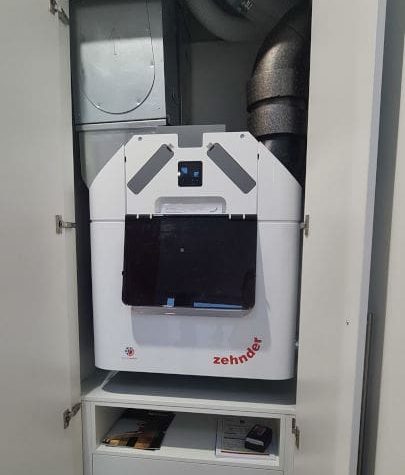
This Heat Recovery Ventilation unit runs 24/7, introducing filtered fresh air from outside and exhausting stale air from the kitchen/laundry/bathroom. HRV recovers 95% of the heat, as all the ducts are inside the house.
Passivhaus means properly designed, expertly built and tested. Certification requires sealing a huge fan in the doorway, then subjecting the house to a very stiff breeze, enough to move a water level column by 5mm.
This means that when the building is pressurised or depressurised to 50 Pascals, the total air leakage must not exceed 60% of the building volume, known as Air Change per Hour. To reach that level, you even need to stop the air leaking through the slots in your power points.
Whereas an Australian house, theoretically built to 6 or 7 star standards, will leak 1500% to 2000% under the same test.
Sadly, the National Construction Code doesn’t mandate testing or specific airtightness targets, but it does some handwaving about “efficient thermal performance”.
So while the Germans test for 60% leakage, 0.6ACH@50Pascals, Australian houses with good weather sealing and quality construction might get below 1000% or 10ACH. However, real world research on Melbourne homes assumed to meet 6-star NatHERS showed an average airtightness of 1900% or 19ACH.
And that’s if you can even get a blower door test to work. It’s not uncommon for the building to simply fail testing because it leaks like a sieve.
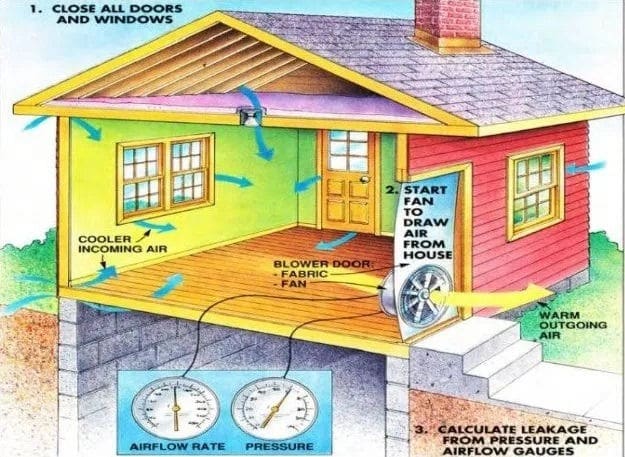
Suck all the air out of the house and measure how much flows in through all the cracks. image credit mincin-insulation.com
Superior Systems Are Split
Instead of wafting energy around outside the house with a fan, it’s vastly more efficient to pump it as a liquid, through far smaller pipes.
With a heat pump, your plumbing is much better insulated. It pipes heat through the building and only converts it to warm air once it’s inside.
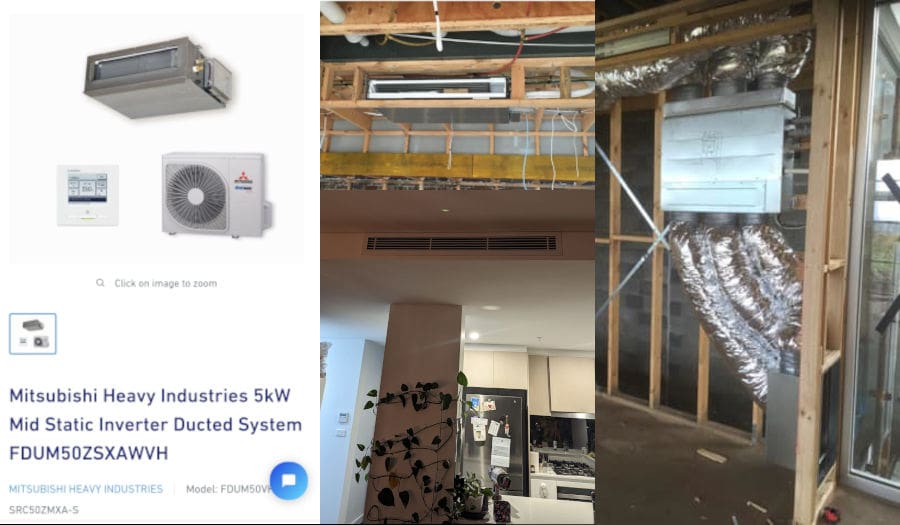
Bulkhead systems can be built into walls & behind cupboards.
And when you have multiple split system air conditioners, you can choose which zones to heat, and no single point of failure will leave you without heating.
They don’t have to be ugly either: built into a bulkhead they’re not obtrusive.
Whereas I’ve seen a living room peppered with twenty-five holes in the ceiling for gas heating, evaporative air conditioning and downlights. What a mess.
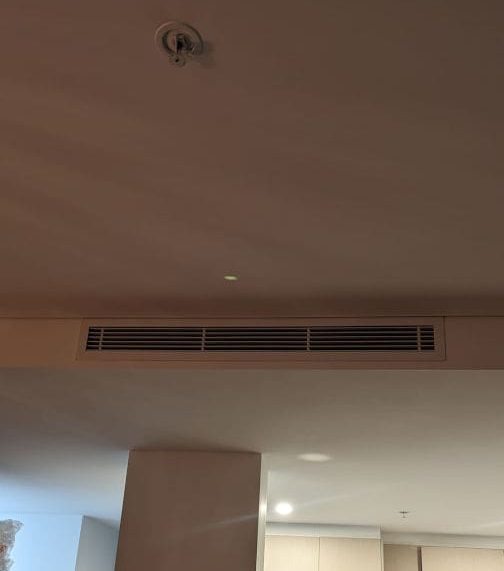
Bulkhead air con outlets are no different to ducted units.
Why Do Leaks Matter?
Firstly, no matter what system, leaks mean you’re just pissing money into the wind.
Secondly, insulation leaks and cold drafts generally don’t affect comfort levels. You turn the gas burner up and just use sheer combustion power to overcome the losses. It’s as quick and dirty as it is expensive.
Whereas a heat pump RCAC is inherently more efficient, so with fewer kilowatts of outright power, you have to be more careful not to waste the heat you’ve harvested and pumped inside.
And as an added bonus, if you can stop the drafts, control the atmosphere, regulate humidity & CO² then you’ll also exclude allergens and pollutants. Dust, pollen and bushfire smoke no longer trigger asthma or allergies when your house is well sealed.
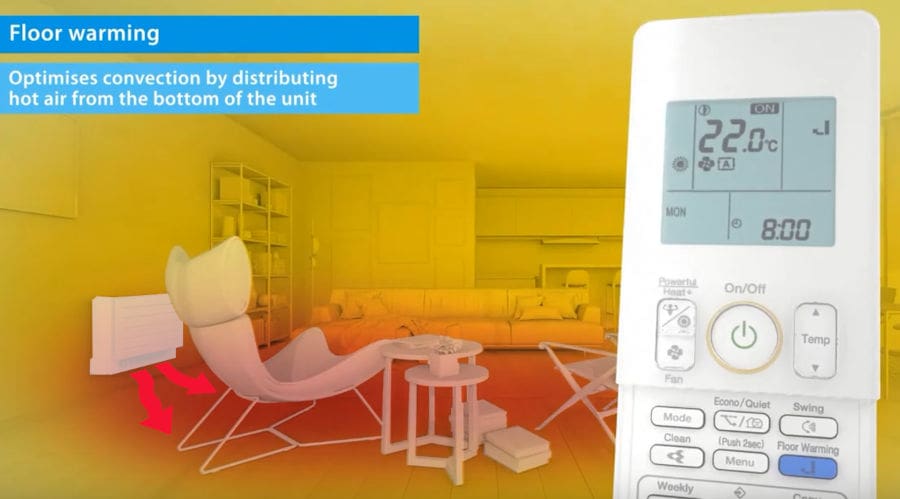
Floor consoles are popular in Europe and New Zealand. Filters are easy to clean and they heat from the bottom up.
Plan For Success
Sadly it’s not uncommon to hear about RCAC systems that don’t perform as well as the gas-fired money incinerator they replaced. The complaints are commonly “sure it’s cheaper; but it’s not as fast and I’m not as warm”.
Instead of just bolting on an air con, often what’s needed is a whole-of-home energy audit and a rethink of how you heat.
Automated window dressings or cellular blinds, bulk insulation, draft proofing, window and door sealing, skylight replacement, even double glazing can all be great improvements to make your house more comfortable and cheaper to run.
These improvements can make the difference between a system that struggles and one that’s toasty.
And if you have your own solar power to use, program the RCAC to warm the house up when the sun is shining, so temperature will be under control when you get home. Otherwise, hitting the switch at 6pm when the house is frigid means the system will struggle and your retailer will violate you for peak energy rates.
Comfort Comes In Many Forms
While retrofitting a poorly built or badly designed house can be difficult, what I can’t stress enough is the value of comfort.
It can be really rewarding to make material improvements to where you live, but what’s even better is having a home that’s comfortable to live in without having to sit on top of the heater and fret about what it’s costing. Start with efficiency; then get off gas.
For more, read about how much getting off gas can save you, how to disconnect without getting hit by huge fees, how much more efficient electric appliances are compared to gas, and the latest findings on cancer risk to children from gas stoves.

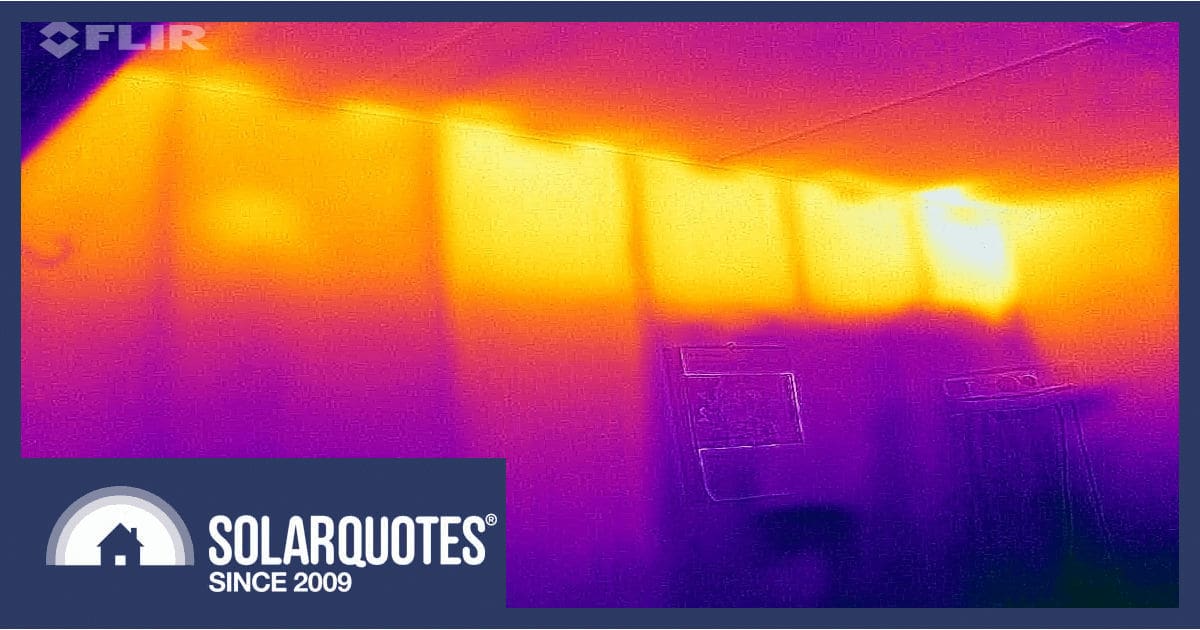
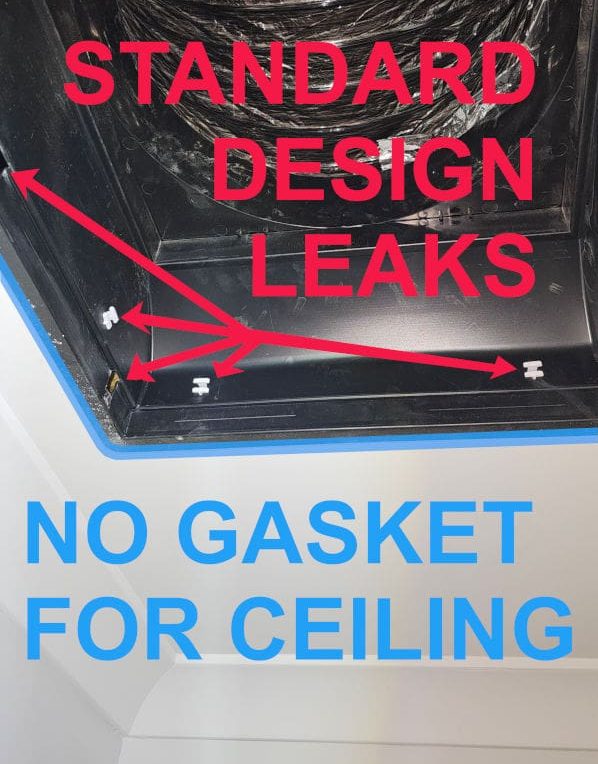
 RSS - Posts
RSS - Posts


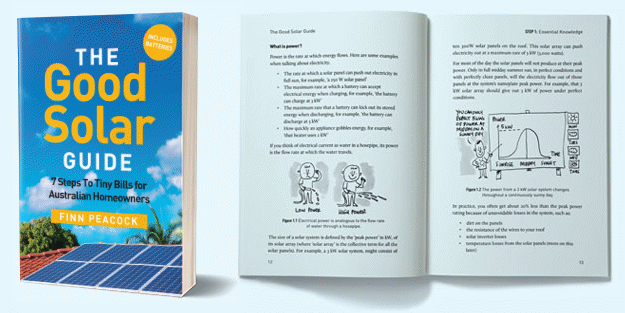
Wouldn’t it be more efficient to run one reverse cycle air conditioner ducted system for the whole house, than five or six split systems?
Hi Peter,
Individual systems are more nimble, more controllable and don’t need a minimum air volume to flow through the whole house to work properly.
And when one blows up you only lose one room, not the whole house. Imagine that 2 days before xmess 😉
I’m in Queensland, if it gets really cold, I’ll close the doors and windows, but that only happens a few days a year at most…
Thanks for your blog, but ….
RCAC systems (particularly wall mount) generate drafts that can be uncomfortable.
The most comfortable means of home heating is hydronic radiators. Newly installed systems are able to employ heat pumps.
However, retrofitting existing systems (of which there is a significant number in Victorian homes) is problematic as heat pumps produce water at lower temperatures. This requires existing radiators (sized for gas boilers) to be replaced with larger ones.
Some manufacturers are now claiming to offer heat pump “boilers” that can replace gas-fired units, but they are expensive, and can require significant electrical upgrades.
This winter we’re keeping our gas-fired hydronic boiler running, despite the enormous running cost, until such time as there is a cost-effective electric alternative – or until the gas runs out!!
We are in the same situation. Our house is double glazed, well insulated but hydronic heating with gas fired boiler. I have run the output at 50 C to determine how well that would work. It’s OK, not toasty warm by any means .. some designs shown to us had 2 heat pumps in series to get the water temperature up .. cost of the tandem system – German was in the order if $60-$70k
So we are waiting for prices of these heat pumps to come down .. and reverse cycle wall units are not a great solution compared to hydronic .. 🤔
Re PassivHaus: as you said they are a totally built environment. Generally super-insulated (250+mm bulk insulation in the ceiling for instance), but the houses also aspirate moisture: There is an Air-tight layer placed depending on the heat differential inside to outside. This layer is moisture permeable so the walls transpire, but do not leak air. Any Air leaks are potential mould risks because the moving air & temp differential means the water drops out in the insulation (wall/ceiling/floor) in a modern house. By restricting air leaks, the mould issue is reduced to virtually zero. fyi, old housing stock can be renovated to close to PassivHaus standards & there are examples in Australia.
When a PassivHaus is ventilated, usually it is by a MVHR where air passes a heat exchanger. These devices are efficient at 60-90W draw. Because the envelope is super-insulated the losses are small. A supplementary RCAC can heat/cool the house. The air movement is needed to reduce CO2 accumulation.
Agreed.
Gas bad. RCAC good.
Split systems are efficient and cheaper. Ducted RCAC less ugly, less efficient and more expensive.
Single phase ok if you can get away with it. Three phase ok for future proofing if you can afford it.
But there is a cost to change from ducted gas heating and evaporative cooling to RCAC. Here is a breakdown of my costs June/July 2023.
. Upgrade to 3 phase supply $4000
. Remove and dispose of old ducted air con,
+ Install 3 phase RCAC with new ducting $20000
. Plasterer to rectify unused cooling register holes $700
So, all up about $24700 in Canberra using trusted and reliable tradies.
Great breakdown, thanks Ian.
Had sub-floor ducting, and the ducting blocked access to almost all of the sub-floor, also damaging airflow to the sub-floor itself. It was a delight to have it all removed. Replaced with a split system in almost every room. Can now heat the entire house for next to no money at all, even 24 hours per day, something we could never afford with gas ducted heating,
Very interesting article and hopefully will make our new build a bit better designed.
I do have one query about the picture of “Bulkhead systems”. Rather than showing split systems, they show ducts and the text on the left references a “static inverter ducted system”.
Isn’t this somewhat going against the aim of the article? Variable rather than static inverters are the “easy load start” and still moving air rather than liquid / gas.
Yours,
Confused of NSW
Hi Owen,
The bulkhead systems are like a full house ducted system, except they only cover one room and the ducts are only long enough to get from the floor to the ceiling.
You could also argue they’re much like a split system hidden in the wall, with some piping to get the air to and from the machinery.
The primary advantage is that they’re still inside the insulated envelope of the house.
Yeah had a few $1000 winter time gas bills when I had gas central heating.
Hi Anthony
We built our house in 1999 when gas was still popular. We have gas ducted heating. Our problem is that all our external walls in the living areas have windows and there is no space above the windows for a split system. We now have solar panels and when the gas ducting dies we are unsure what to substitute it with. I was wondering if you can put split systems on internal walls?
Hi Kate,
You certainly can put a split system anywhere. There are also cassette units which go in the middle of the ceiling. The only issue is that they rely on a little pump that lifts the condensed moisture out of the unit and pushes it outside.
Condensate pumps are fine but not as reliable as gravity of course.
I’m a fan of floor consoles which can go at the bottom of the wall too. Better for heating, easier to clean.
If you want to go all in on building upgrades then it might be best to replace the windows with uPVC double glazed units. Make them smaller and fill the space above or below them with cement sheet/weatherboard cladding which allows you to better insulate the wall.
The best windows are still terrible compared to a wall but sadly the building industry has found glass is cheaper than bricks so they fit oversized windows to make things cheap.
This
“This Heat Recovery Ventilation unit runs 24/7, introducing filtered fresh air from outside and exhausting stale air from the kitchen/laundry/bathroom. HRV recovers 95% of the heat, as all the ducts are inside the house.”
sounds extremely interesting.
I had not been aware of this product type, before the article above, and, I believe that it needs to be publicised in Australia.
About 25 years ago, I got a Braemar ducted evaporative air conditioner installed, as, amongst other things, with the exhaust vents and ceiling exhaust fans, the house is ventilated. But, it does not provide heating or stop smoke. I considered getting ducted gas heating also but the cost at the time, stopped me. I am not sure, but I think that the evaporative air conditioner cost about $5,000, 25 years ago.
This new type of system apparently provides temperature control, and, filtered ventilation, which would be useful, with the smoke from fires in all seasons – it appears to be a healthier alternative.
Before you go overboard on MHRV, it’s coming up to that time of year when some Passivhaus places are open to the keen. It was in June but now November.
https://www.passivhausassociation.com.au/international-passivhaus-open-day
The MHRV won’t heat or cool apart from what it can do with equalising the incoming and outgoing air, no humidity reduction but yes, there is a filter to be swapped out at least monthly that traps all the gunk in the air. Most (all?) Passivhaus will run this low power system 24×7 as well as having the windows open if the weather is appropriate.
We have a couple split systems and a ducted air conditioning unit in Canberra so hot dry winters and sub zero winters. We have solar and most days export at least 10kwh (it was cloudy and rainy today though so we only exported 1kwh (we produced 3.4kwh).
Is it more efficient overall (just in terms of power usage not in terms of cost) to run the the air con units all the time at a set temperature or turn them on and off when we need them? How much power do they use when they are idling (being on but not heating/cooling).
I was told previously by the air con installer (in a previous house) to run them a full-time at a set temperature. However that seems to leave them working when they aren’t needed (eg we’re asleep etc) especially in the cold nights of our winters. However maybe those savings are lost when the unit is started the next morning in the freezing cold.
I suppose it partially/mostly comes down to how well insulated the house is.
Also in Canberra. We turn our ducted RCAC down to lowest heating setting at bedtime, as the house is fairly well insulated and draught proofed – though not as well as when new.
The big problem here is that cold winter air, plus higher humidity, can freeze up the outside unit so it needs a long time to defrost before it can work. The convention here is to oversize the unit in the hope that 50% of the heat exchange fins can stay clear of ice (didn’t work very well last winter).
Sounds like you need to run a few days of experimenting for each scenario to see which gives you the best result.